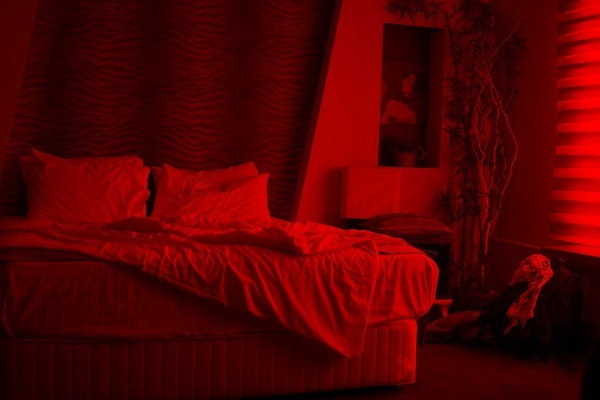Color is everywhere and everything has a color. It infuses our experience from the moment we wake up to the moment we fall asleep. Because color is a pervasive feature of our sensory world and evolution equipped us with exquisite color sensitivity, we surround ourselves with beautiful and harmonious hues and shades.
But is color more than a matter of taste? Can it change our moods and even our physiology? Science answers yes to both of those questions. And, because mood and physiology affect how well we sleep, color influences whether we have a refreshing night’s rest or hours of wakeful anxiety.
Color is the eye and brain’s interpretation of light’s wavelength. Within the spectrum, we can see, violet and blue light have the shortest wavelengths and red light the longest, with the rainbow’s colors in between. The frequency of light entering our eye depends on its source and the interaction between light and the surfaces that reflect it.
That gives us three ways to control the color of our environment in the hours before bedtime: the color of light sources such as bulbs, of walls and furnishings, and of screens such as phones and TVs.
How Does Color Impact Sleepiness?
Sleepiness and wakefulness are regulated by the circadian rhythm, an internal clock that responds to external stimuli, including color. A landmark study of the impact of color found that: “color and light have an effect on physiology, psychology, cognitive performance, and hormone production.”
Melatonin is the most important sleep hormone. Your pineal gland produces more melatonin as bedtime approaches. Your body responds by lowering its temperature, slowing your heart, and reducing your alertness. If the “wind-down” process works as it should, you’ll have little trouble falling asleep when bedtime comes.
But light can affect how much melatonin your body makes. There are two critical factors to think about: intensity and color. The bright light of any color reduces melatonin production, which makes sense if you think about it. Your brain associates dim light with evening and night. It is confused by too much light at the wrong time and attempts to keep you alert and ready for action.
Which Colors Help You To Fall Asleep?
Color has a more subtle effect than light intensity. In fact, there are many myths about the impact of various colors, especially blue. Blue is often said to be a relaxing color that promotes sleep. You can find many claims online that blue decor helps people to fall asleep quicker and sleep for longer.
However, more recent science shows that blue has the opposite effect; it suppresses melatonin production so that it is harder to fall asleep. A 2014 study shows that blue light stimulates alertness and suppresses melatonin — it promotes wakefulness, not sleepiness.
The finding is echoed by a 2016 study from Oxford University that shows, in mice at least, that blue light delays sleep more than other colors. The Oxford Study tested light at three wavelengths: blue, violet, and green. Green light “produced rapid sleep onset,” but blue and violet light delayed it.
This can be a bit confusing, so let’s cut to the chase.
- Blue light suppresses melatonin production and increases wakefulness. Avoid blue light before sleep and decor with a dominant blue coloration.
- Green has a negligible impact on melatonin production. It is unlikely to cause sleep problems and many people find green relaxing.
- Red has no impact on melatonin production. It is an excellent choice for lighting and bedroom decor.
- Yellows and oranges have little impact, and warm yellow lighting is ideal for the hours before you go to sleep.
- White light is a mix of wavelengths from across the spectrum, but many white lights have a significant blue component and are best avoided before sleep, especially white fluorescent and LED lights.
The Best Sleep Preparation Routine
In conclusion, let’s summarize our advice for the ideal pre-sleep color routine.
- Spend the hours before bedtime in a room decorated in warm reds and yellows or relaxing greens.
- Avoid sources of blue and white light. You may want to swap your light bulbs for warmer, yellower alternatives, or use smart bulbs programmed to produce warmer light in the evenings.
- Don’t forget about the light coming from screens, including phones, tablets, and TV screens. Modern device screens can reduce blue light with features such as Apple’s Night Shift and Android’s Night Mode.
Color is just one factor in a good night’s sleep. Comfort, temperature, and exercise are just as important. However, color shouldn’t be neglected if you want to help your body’s circadian rhythm to function as it should.
About the Author: Aaron Goldsmith is the owner of Transfer Master, a company that has built electric adjustable hospital beds for the home and medical facility since 1993. He started with a simple goal that hospital beds should allow wheelchair users to transfer independently in and out of bed. 25 years later, his customers are still at the center of everything he does. For more information, be sure to visit transfermaster.com or contact the team via email.

